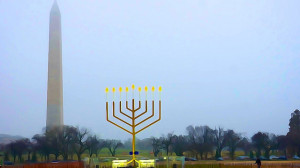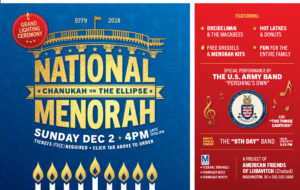We have host families from a wide variety of backgrounds and faiths; some of our host families celebrate Christmas, some celebrate Hanukkah, some celebrate Kwanzaa, and some celebrate more than one holiday or none at all. If you’re an au pair living with a host family who celebrates Christmas and you do not, I encourage you to take part and experience it with them. This can be a great opportunity for learning and culture sharing. I also encourage host families to ask their au pairs to share their holiday traditions and customs.
History
Christmas is both a sacred religious holiday and a worldwide cultural and commercial phenomenon. For two millennia, people around the world have been observing it with traditions and practices that are both religious and secular in nature. Christians celebrate Christmas Day as the anniversary of the birth of Jesus of Nazareth, a spiritual leader whose teachings form the basis of their religion.

Image: Alan Cleaver (Flickr)
In the United States, popular customs include exchanging gifts, decorating Christmas trees, attending church, sharing meals with family and friends and, of course, waiting for Santa Claus to arrive. December 25–Christmas Day–has been a federal holiday in the United States since 1870. (Source: History.com)
Christmas Traditions in the US

Infographic: History.com
In the US, Americans celebrate Christmas with traditions that have been introduced from different cultures as well as some uniquely American celebrations.
- The period of time in the US from Thanksgiving through New Year’s Day is called “the holidays.”
- Decorated Christmas trees begin lighting up windows in homes, and shops and outdoor plazas shortly after Thanksgiving.
- Christmas tree ornaments can be found in almost every store, but many families have boxes of treasured ornaments made by children out of paper and other crafts which are lovingly hung year after year.
- Christmas lights decorate trees indoors as well as the front lawns and porches of houses. Many parks have special holiday light displays.
- Children write letters to Santa Claus requesting gifts. Shopping malls, parties, churches, and some schools host events where children can have their photo taken with Santa Claus and ask him for gifts in-person.
- Christians remember the birth of Christ with nativity scenes displayed on church lawns, Christmas pageants performed by children in churches and some schools, and delicate, often handcrafted manger scenes set out among the Christmas decor at home.
- On December 24, Christmas Eve, many families have special traditions and often attend Christmas Eve church services. Children hang Christmas stockings, leave cookies and milk for Santa Claus, and try their best to fall asleep so Santa can deliver their presents.
- On December 25, Christmas Day, children wake up early to see the gifts Santa Claus left them. Families exchange gifts, which have been wrapped and placed under the Christmas tree.
- Americans mail Christmas and holiday cards (often with photos of the family) throughout the holiday season. In 2010, Americans mailed 1.5 billion holiday cards.
-

Source: Moo.com
Many Americans view the same beloved Christmas movies year after year. Some classic favorites include, “A Charlie Brown Christmas,” “It’s a Wonderful Life,” “The Christmas Story,” “Home Alone,” “Rudolf the Red-Nosed Reindeer,” “Frosty the Snowman,” “The Grinch Who Stole Christmas,” “Elf” and “A Miracle on 34th Street.”

The 2018 U.S. Capitol Christmas Tree (Forest Service photo by Cecilio Ricardo)
Celebrating Christmas in Washington, DC
- Winter Wonderland: Your Guide to the Holiday Season in Washington, DC
- The 2018 KFDC Guide to the Holiday Season in DC
- TripSavvy’s Guide to Christmas in Washington, D.C.: Lights, Parades, and Festivals
- TripSavvy’s Guide to Christmas in Washington, D.C.: Kids’ Events and Attractions








